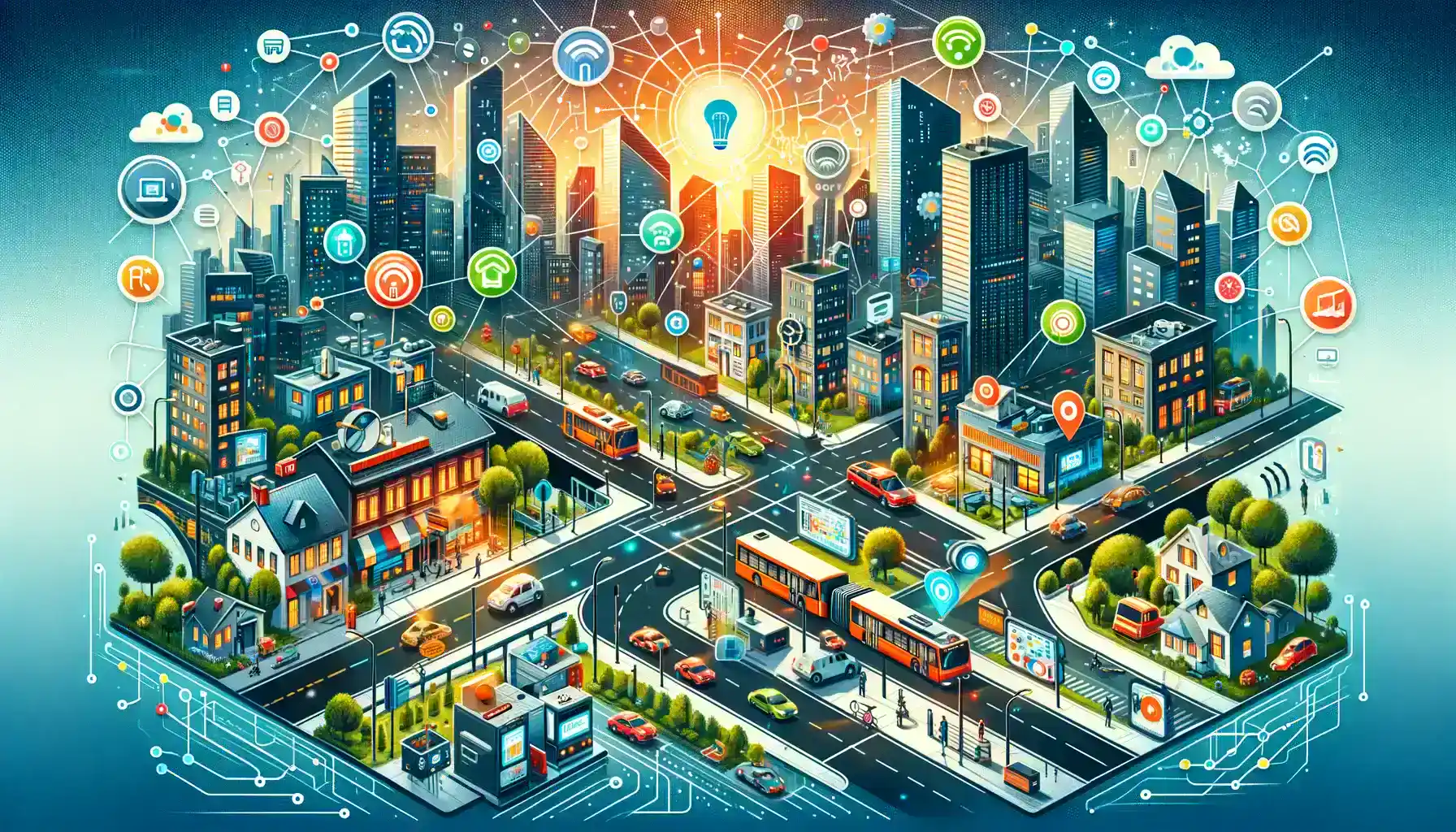Table of Contents
In today’s fast-paced technological environment, the seamless integration of diverse systems and software stands as a cornerstone of efficiency and innovation. This integration, known as interoperability, is far more than a mere technical requirement; it represents a significant strategic asset in an increasingly interconnected digital world. At its core, interoperability is the ability of different technological systems and organizations to communicate and exchange information effectively, transcending barriers of language, format, or protocols.
The essence of interoperability lies in its role as a facilitator of seamless interaction. In a landscape brimming with a myriad of platforms, tools, and software applications, the need for these systems to work cohesively is paramount. This necessity stretches across all sectors, from healthcare, where it enables the sharing of critical patient information across different healthcare systems, to finance, where it allows for real-time transactions and data sharing across different banking institutions.
The Significance of Interoperability
Interoperability is vital for the efficient functioning of various technological systems. It ensures that different hardware and software, created by different vendors, can communicate and operate on a common platform without any glitches. This seamless integration is crucial for the functionality of complex networks, particularly in sectors like healthcare, finance, and telecommunications.

In sectors like healthcare, finance, and telecommunications, the role of interoperability is especially pronounced. In healthcare, for instance, interoperability plays a critical role in patient care. It allows different health information systems to exchange and make use of patient data, regardless of the software or the service provider. This means that a patient’s medical history, lab results, and other critical information can be shared quickly and securely among various healthcare providers, leading to more informed decision-making, better patient outcomes, and a more efficient healthcare system overall.
In the world of finance, interoperability is key to the smooth functioning of payment systems, banking software, and financial markets. It enables different financial institutions and systems to interact, ensuring that transactions are processed swiftly and securely. This is crucial for maintaining the stability and efficiency of global financial systems, where milliseconds can make a significant difference.
Benefits of Interoperability
Enhanced Efficiency:
One of the most immediate benefits of interoperability is the increase in efficiency it brings to various processes. When different systems can communicate and work together, it eliminates the need for duplicate efforts and reduces the likelihood of errors caused by incompatible technologies. This streamlined interaction means that tasks that previously required multiple steps or the involvement of several different systems can now be completed more quickly and with fewer resources. For instance, in a supply chain, interoperability between suppliers, logistics providers, and retailers can significantly speed up processes and reduce delays, leading to a more efficient operation overall.
Improved User Experience:
Interoperability greatly enhances the user experience by providing a more cohesive and intuitive interaction with technology. When different applications and devices work together seamlessly, it reduces the learning curve for users and eliminates the frustration of dealing with incompatible systems. This seamless integration is particularly evident in the realm of consumer electronics, where it allows for a unified experience across various devices, from smartphones to smart home systems, making technology more accessible and enjoyable for the end-user.
Innovation Acceleration:
Perhaps one of the most exciting benefits of interoperability is its ability to drive innovation. By allowing different technologies to connect and share information, it opens up new possibilities for creative solutions and advancements. It encourages collaboration between different sectors and disciplines, leading to unexpected and groundbreaking developments. For example, in healthcare, interoperability between medical devices and electronic health records can lead to new insights into patient care and the development of more effective treatment plans.
Real-World Instance: Open Banking
A prime example of interoperability fostering innovation can be seen in the banking sector with the advent of Open Banking. Through the use of standardized APIs, Open Banking allows third-party developers to securely access financial data provided by banks with the consent of their customers. This has led to the creation of a multitude of new financial services and applications, offering consumers more personalized and convenient banking experiences. It has spurred the development of budgeting tools, financial management apps, and even new payment systems, illustrating how interoperability can be a powerful catalyst for innovation.
Challenges in Achieving Interoperability

Technical Hurdles:
One of the primary obstacles to achieving interoperability is the technical complexity involved. The diversity of programming languages, platforms, and standards across different systems can be a formidable barrier. For instance, when two systems are built on entirely different technology stacks or use different data formats, making them communicate seamlessly can be a complex task. This is compounded by the fact that technology is constantly evolving, leading to a moving target in terms of maintaining interoperability.
Data Security and Privacy:
Another significant challenge is ensuring data security and privacy during the exchange of information between systems. This is particularly crucial in sectors like healthcare and finance, where sensitive personal data is involved. As systems become more interconnected, the risk of data breaches and unauthorized access increases. Ensuring that all interconnected systems adhere to stringent security protocols and comply with privacy laws like GDPR or HIPAA becomes a critical concern in the interoperable ecosystem.
Cost and Complexity:
Developing systems that are capable of interoperating with other systems can be an expensive and complex endeavor. This is especially challenging for smaller organizations or startups that might not have the resources to invest in such technology. The cost isn’t just financial; it also involves time and human resources. Ensuring that staff are trained to handle interoperable systems and keeping up with the latest developments in technology standards can add to the complexity.
Strategies for Achieving Interoperability
Adopting Standards:
One of the most effective strategies is the adoption of universal standards and protocols. Standardization ensures that different systems speak the same language, making it easier for them to communicate and exchange data. Standards can be in the form of data formats, communication protocols, or even industry-specific guidelines. For example, in healthcare, standards like HL7 or FHIR (Fast Healthcare Interoperability Resources) are crucial for the interoperability of electronic health records. In web development, standards like RESTful APIs (Representational State Transfer Application Programming Interfaces) enable different web services to communicate smoothly.
Open Source Solutions:
Another key strategy is leveraging open-source software. Open-source solutions often come with fewer restrictions and can be adapted more easily to suit specific interoperability needs. They can serve as a common ground for different systems, providing a flexible and cost-effective way to achieve interoperability. Additionally, open-source communities contribute to continuous improvements and updates, which can help in keeping pace with evolving technologies and standards.
Collaboration:
Collaboration among various stakeholders is essential for developing interoperable solutions. This includes technology providers, regulators, and users. Collaboration can lead to a better understanding of the different needs and constraints of each party, fostering the development of solutions that are more widely applicable and effective. Collaborative efforts can also help in establishing and promoting standards, as well as in sharing best practices and knowledge. For instance, industry consortia or working groups can play a pivotal role in driving interoperability initiatives.
Case Studies

Smart Cities:
In the domain of Smart Cities, interoperability is a key component in realizing the vision of a connected and efficient urban environment. Here, various systems such as traffic control, public transport, emergency services, and utility management need to interact seamlessly to enhance city management and improve citizen services.
For instance, consider a smart traffic management system that adjusts traffic signals in real-time based on traffic flow data. This system must be interoperable with public transportation systems to prioritize buses or trams during peak hours, ensuring timely and efficient public transport. Similarly, in emergencies, interoperability between emergency services and traffic control can facilitate quicker response times by optimizing routes for emergency vehicles.
Internet of Things (IoT):
In the IoT space, interoperability is crucial for the smooth functioning and full potential of interconnected devices. The ability of devices and systems from different manufacturers to communicate and work together is essential for creating a cohesive IoT ecosystem.
A prime instance can be found in smart home environments. Here, compatibility allows for a range of devices, such as smart thermostats, lighting systems, security cameras, and voice assistants, to interact seamlessly, regardless of their manufacturers. This interaction enables a more integrated and user-friendly experience. For instance, a voice command through a smart speaker can adjust the thermostat, dim the lights, and play music, even if these devices are from different brands.
Conclusion
Interoperability is a technical requirement and a catalyst for innovation and efficiency in the technology sector. By enabling different systems to communicate and collaborate, interoperability breaks down barriers, paving the way for advanced, integrated solutions that can transform industries and enhance our daily lives. As technology advances, the pursuit of interoperability will remain a key driver in the evolution of a more connected and efficient digital world.